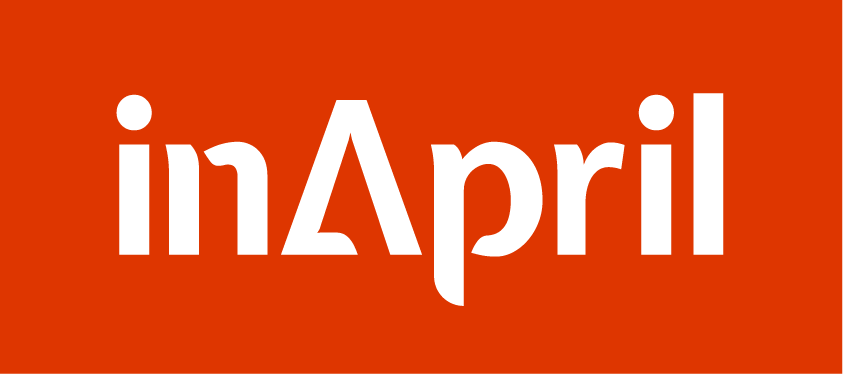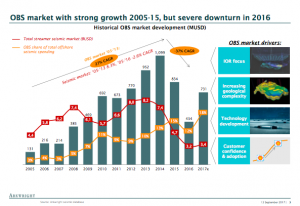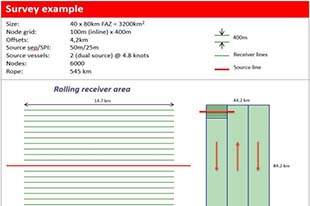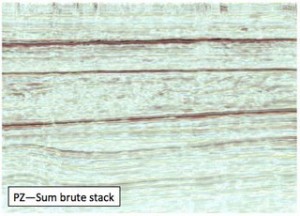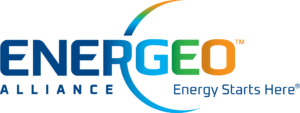inApril has signed a contract for the lease of nodes to a client in the North America region. The nodes to be delivered will be the US version of the A3000 and the contract will commence in the second quarter 2020 with a duration of approximately 3 months.
Oslo, August 20, 2018
inApril is pleased to announce the appointment of Pierre-Loïc Laizet as Vice President Technical, effective September 1. Pierre started his career assembling wireline tools with Schlumberger in Paris, then moved to Norway and Malaysia with WesternGeco in engineering and manufacturing of marine and land seismic hardware. Combined with experience in sourcing and supply chain management, he has acquired a wide range of technical expertise in the manufacturing of seismic systems. His latest position was Technical Manager for Malthus Uniteam, focusing on modular and containerized solutions for the oil and gas industry. He is a French citizen and resides in Norway.

An eventful four days spent with the global seismic industry with strong interest in effective Ocean Bottom Systems.
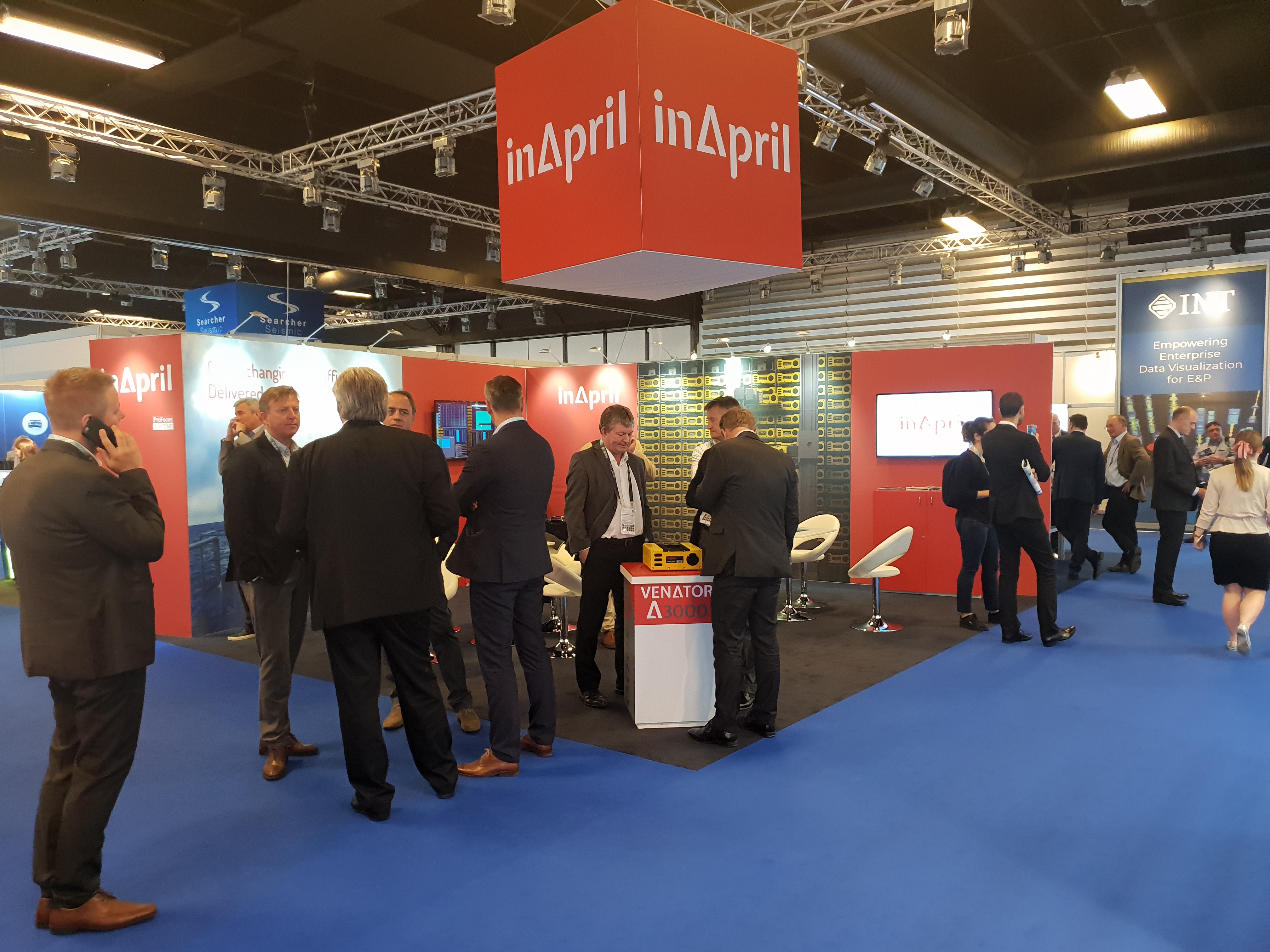
VP Technical
inApril is currently recruiting for a senior level technical position to our offices in Lillestrøm, Norway. The position, reporting to the CEO, will be responsible for the oversight and management of manufacturing, system delivery and further development of our Ocean Bottom Node solutions.
Responsibilities
- Oversee internal technical developments and deliveries
- Manufacturing management (manufacturing is outsourced)
- Manage Automation development (mechanical department)
- Monitor market trends and make recommendations for management
Requirements
- Minimum 10 years of experience in a technical role within seismic acquisition. Experience within ocean bottom seismic is an advantage, but not a requirement
- Strong experience, understanding and knowledge of mechanical design and operations
- Overall good knowledge and understanding of electronics and software
- Fluent English verbal and written language
inApril is an independent provider of complete and fully automated ocean bottom node (OBN) seabed seismic solutions to seismic companies. We offer a step change in safe and efficient operations of seabed seismic acquisition.
Applications to be sent to post@inapril.com with the subject “VP Technical – Application” within the 25th of May. For further information on this position, please send an email to the same address with the subject “VP Technical – Information”
By applying for this position you accept that inApril store your application for a period of up to 6 months.
Some of the graphics provide a clear picture of why inApril’s innovative approach to reducing costs and speeding operations, based on a high degree of automation, exactly meets the needs and preferences of the offshore E&P industry going forward. It is clear from this report that inApril can successfully challenge towed streamer solutions to multi-/wide-azimuth and other seismic surveys involving complex geology, as well as provide high quality multi-component data for reservoir characterization.
Click on the image to open the summary.
The system, which features fully hands-free handling and flexible node spacing at unprecedented speeds, was tested in 110m water depth over a part of the Edvard Grieg field (PL 338), operated by Lundin Petroleum, in the Norwegian North Sea. The node used was inApril’s A3000 node, suitable for both deep and shallow water operations.
The trial repeatedly demonstrated ‘node-on-a-rope’ deployment speeds of 5 – 6 knots and retrieval speeds at 3 – 4 knots in these water depths, enabling up to 20 km² full-azimuth data acquisition per day in exploration mode.
Preliminary results confirm the excellent data quality also shown by previous sea trials, only achievable by seabed data acquisition. Data processing will be carried out in the coming weeks.
According to numerous industry executives and analysts, more efficient node-based ocean bottom seismic will provide the optimal solution for oil companies looking to increase reserves at reasonable costs via targeted exploration and reservoir characterization data acquisition.
Vidar Hovland, CEO of inApril, said: ‘The market has been waiting to see if we can deliver what we promised. Now we have documented that Venator offers a game-changing, cost-effective, and fully automated exploration and reservoir characterization tool. The system is flexible and can be containerized for mobilization to a variety of vessels for a range of offshore seismic applications and water depths.’
Following is our abstract paper presented by Ronny Bøhn at the SEG OBN Technologies and Applications Workshop in Beijing.
The paper considers the high cost and operational inefficiencies traditionally associated with ocean bottom seismic (OBS) acquisition that have deterred wider industry adoption of this compelling technology. A case study is presented on how the main challenges are being overcome in the development of a next generation ocean bottom node (OBN) system focused on lower cost and more efficient, faster operation with scope for exploration projects as well as reservoir characterization and monitoring.
View the white paper here:
Another small scale test has been carried out with a second potential customer and a third and full scale test is scheduled before summer to demonstrate inApril’s launch and recovery system at up to 6 knots deployment and recovery speed.
They both were elected for a period of two years and replace John Thompson and Terje Sparengen, who have served on the board since 2014.
”We are very pleased that Tore and Jan join us as they will add solid financial, commercial and strategic perspectives to the board”, says CEO and Founder Vidar Hovland.
Tore Valderhaug has close to 20 years’ experience as finance director/CFO in the Norwegian publicly listed companies Cermaq, EDB Business Partner, ASK Proxima, Ocean Rig and Unitor. Valderhaug was CFO and head of business development in PHARMAQ AS, a leading pharmaceutical company supplying the aquaculture industry until the company was sold late 2015. He is currently also a member of the board of the publicly listed companies Nordic Semiconductor ASA, Q-Freee ASA and XXL ASA.
Jan Helgebostad holds a M.Sc in Geology/Geophysics from The Norwegian Institute of Technology (NTNU) and a MBA from BI Norwegian Business School. Helgebostad has more than 30 years’ experience from the geophysical industry and he managed for 10+ years Fugro-Geoteam’s global sales and marketing activities. His work has in addition focused on business development, strategic processes and technology development.
